The global ag machinery market is continuously evolving. AGCO aims to be in the forefront of new technology. Serving their own customers, but also mixed fleet operations. With new solutions in precision ag, autonomous vehicles and engines running on clean energy. Always with full focus on the farmers’ needs. “We are ready for the future”, says Eric Hansotia.
By Ad Bal
In early 2021, Eric Hansotia succeeded Martin Richenhagen as President, Chairman and CEO of AGCO Corporation. Richenhagen had gone into retirement and Hansotia took over full responsibility of AGCO, after having served in various leading positions in the company. From that moment, AGCO kept moving forward with ongoing achievements. Such as the recent creation of a joint venture with the ag division of Trimble, in which AGCO owns a majority stake of 85 percent.
“We entered into an exciting new adventure”, says Hansotia. “With many new challenges and opportunities to serve our customers. The aim of Trimble and AGCO together is to become a new global leader in precision ag solutions. We want to cover machinery of any type with new machines, or machines that are already in farmers’ hands of any brand, anywhere in the world.
We have a relationship with over one hundred OEM’s, to whom we sell directly. That’s one part of the market.
A second part is the retrofit market, which means that we sell to farmers that already have some piece of equipment. We will offer their machinery with new technology, like what we are doing with our subsidiary Precision Planting.
And the third part of the market is technology for our own AGCO brands, like Fendt, Massey Ferguson and Valtra.”
“This means that we are also selling to our competitors, like Claas”, Hansotia continues. “They are using Trimble technology on their machines and we intend to keep that moving forward. They are one of the one hundred OEM’s we are selling to. The whole approach is that their projects and their intellectual property will be kept separate for them. They can leverage common technology, but whatever will be unique, will be kept for them.
With Precision Planting, we have also shown to be an efficient, brand independent partner. That is running well.”
Will the Trimble dealer network be reorganized?
Hansotia: “We’re going to focus on providing the most efficient dealer support to serve farmers all around the world. We have existing Trimble dealers that we’ll be leveraging. But then we also have Precision Planting dealers and AGCO dealers. We’ll determine which of these dealers are taking which role, based on their capabilities. There will be no gaps in the market. Every customer is covered and we aim to have minimal overlaps. Of course, we look specifically to the situation in countries like the Netherlands or Germany, which is different than in the East. There will be a seamless support network for the customer.
Trimble and Precision Planting already have dealers that wake up every morning, thinking about serving all brands of mixed fleet farmers. And AGCO dealers serving an AGCO fleet. “
How will the acquisition of Farm Facts contribute to digitization in agriculture?
Hansotia: “Up until this time, we’re talking mostly about hardware and software technology on the machine. Now we’re also into transition of data platforms. Machines have sensors that are capturing data and these are transmitted to the farm. Then the farmer will use data from platforms and analyze these data, thus ensuring insights to their farm.
FarmFacts is a company that is focused on creating data platforms, mostly in the German speaking areas of Europe. Trimble also has a data platform and AGCO has a data platform. We’re now bringing those 3 teams together, so that now we can say, ‘Which are the features that famers demand to analyze their data?’
Our objective is creating a new data platform, based on all these 3 teams working together. That will be the best mixed fleet data platform in the marketplace, serving most customer requirements. And things differentiated from others. We are also keeping our eye on the competition, making sure that we offer more value to the farmer than anybody else.
We expect this will not only be transformational to AGCO, but that it will be transformational to agriculture. It’s going to be a fundamental shift and creating new capabilities for the next fleet farmer in general. Because we’re going to solve farmer’s needs, no matter what they deserve.
Where possible we will work together with other initiatives, such as 3A in Europe. We are much into an open platform and offer any industry partnership that we think will help.”
“A new data platform will not only be transformational to AGCO, but will be transformational to agriculture”
Will autonomy in agriculture be feasible?
“Certainly, we showed autonomous solutions already last summer. One such solution is an autonomous tractor with grain cart and a combine harvester. When the combine is close to a full bin, it signals the tractor. The tractor, with cart, comes alongside the combine, which then empties into the cart. When the combine is empty, the tractor pulls away and drives back to the silos at home. All that goes autonomously.
The second application is an autonomous tractor, pulling a round baler. The positioning system is looking at the windrow driving, so that the baler is perfectly loaded. It stops when the bale loading is full.
Our investments in automating features on today’s machines, are in preparation for full autonomous machines. Because we have to be able to have machines that do all the things the operator doesn’t do.
Everything with a sensor or vision system adds some intelligence to automate processes. A lot of our investments, such as in JCA technologies, are on autonomous features.
In 2025, we go market with a retrofit kit to enable the combine grain cart autonomous operational. By around 2030, we will have autonomous machines all the way the farming cycle. From tillage, planting, managing the crop and harvesting.
Autonomous machines haven’t been approved yet by the official authorities, but we don’t see that so much as an obstacle. After all, our intention is to be autonomous in the field. A driver in the vehicle on the road is still needed.
Larger fields are better for this project. But anywhere there’s a field condition that can be automated, and a customer that has concerns of things like labor, that’s where autonomous vehicles will come into place.”
In which direction does AGCO develop alternative energy solutions?
Hansotia: “We have launched a fully electric Fendt tractor and new electrification projects are underway, especially up to 150 hp. We think that’s the right mixture of customer value and cost.
Because when you go above that point, the batteries get very heavy and costly. But also: if a machine starts and stops each time, that’s good for a battery. If you just do it full load for many hours, like ploughing or something, that’s not a good application. Farm yard, orchard or vineyard, are good applications.
In addition, we are working on other clean energy solutions like methane, hydrogen and renewable diesel. We’re faithful believers in renewable diesel as a short-term solution, as most machines currently have combustion engines. The CORE engine from AGCO Power has been developed for multiple fuels. We believe it’s a great solution for farmers, because the availability of fuel is more easily, foreseeable. For hydrogen, the infrastructure is some years away.
Yet, we are investigating hydrogen solutions on a tractor. And we have methane projects in South America. Different solutions will make sense in different parts of the world. “
“Electrification projects are underway, especially up to 150 hp”
Will Fendt and MF remain the only two full line AGCO brands?
“The market has needs”, says Hansotia. “We position those two brands to different segments of the market. Fendt goes out to the premium customer that wants high productivity and pays the higher price for that. MF goes out to the straightforward customer that wants a simple to use machine, simple business model and pays the price for that.
So those are two different customer value propositions with two different machine platforms. And they continue to evolve. We just brought a new sprayer in North America from Massey Ferguson and a new tractor from Fendt.
Valtra is a different story. In South America, there’s a couple of dealers left that sell Valtra combines. But fundamentally, Valtra is a tractor brand and a planter and sprayer brand in South America.
Basically, AGCO’s two full lines are Fendt and MF. Mostly we put Valtra and Fendt together, so those two usually share a team.
The CVT’s for MF tractor today is the former CVT of Fendt. Couple of generations old, but still very good and simple. Low cost, dependable.”
“We position our brands to different segments of the market”
How does AGCO respond to markets like India with a rapidly growing population?
Hansotia: “In India and China, machinery is generally different than what we see in Europe, North America and South America. The fields are much smaller and farmers use very simple technology, which didn’t change much over the last decades. And so, our strategy in India is to leverage our partner TAFE. They license the MF brand from AGCO. We also buy tractors from TAFE to sell in other markets around the world, like in Africa. If you look at the tractor numbers sold in Africa, those are still very small. It’s a huge territory. Unfortunately however, African governments are taking actions that make it very difficult to make farming professional.”
What will be the next step for AGCO?
“We talked a lot about our technology development, how we are different and about our open platform”, Hansotia continues.
“Our distribution strategy also goes into a new direction. The need for that is called Farmer Core. It is very much like our technology approach. We put the farmer at the center.
Today our industry acts a lot like a shopping mall, where the customer has to go to the business. You have to go to the mall, have to go to the business. You go to the dealer for buying, for parts, for service and so on.
What we want is bringing the business to the customer, like Amazon is doing. The dealer is coming to the farmer with the tools he needs. It is a complete reversal in distribution thinking, to make it easier for the farmer to keep farming. And make that very convenient for them. We want to lead that in the agriculture industry and a transition to a much more digital, more direct, more farmer focused distribution model. AGCO is the most farmer focused company in the industry. That’s why you see our distribution and our technology development being different than anywhere else. With that and with our wide range of technology solutions, we are ready for the future! “


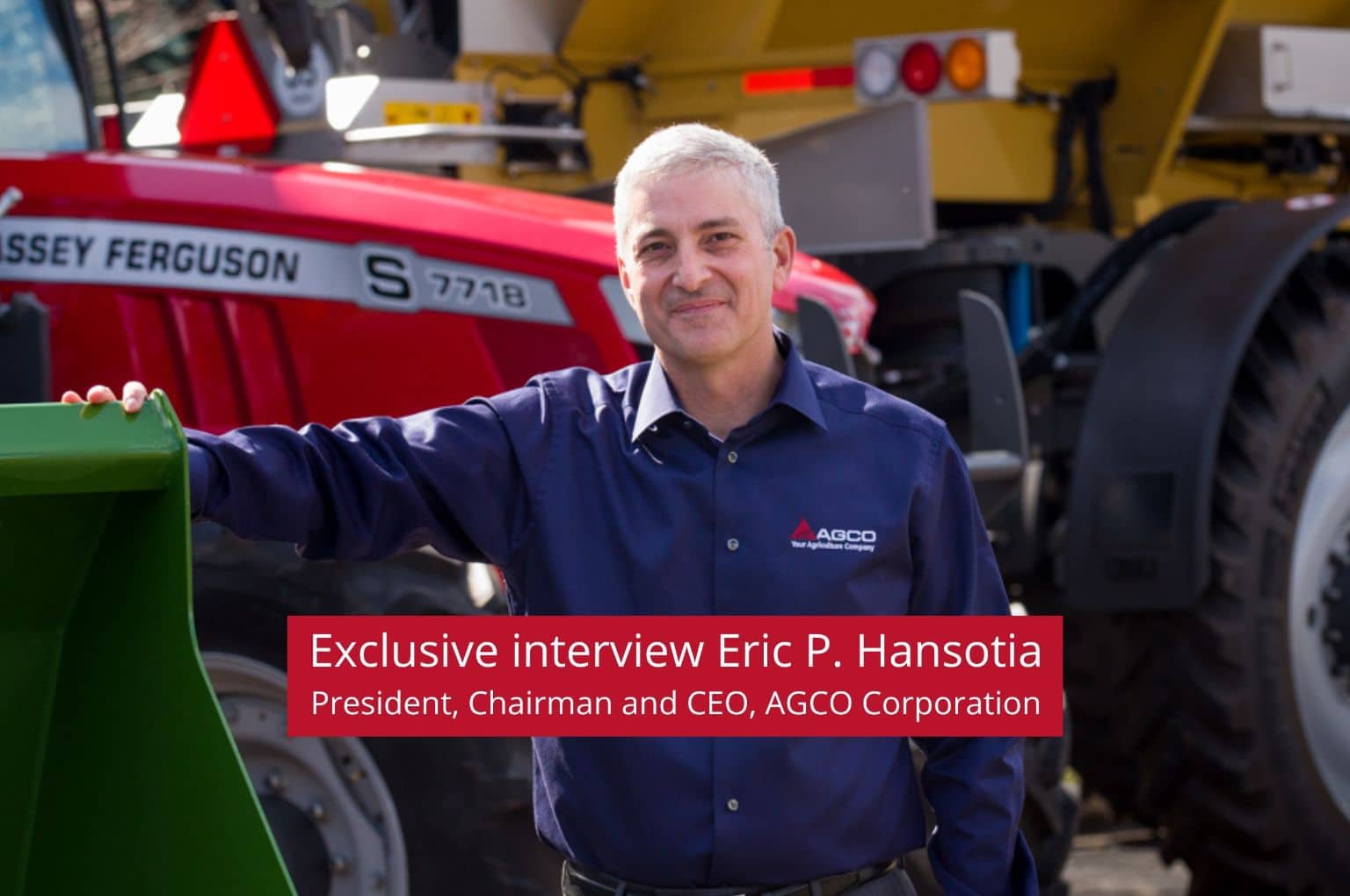
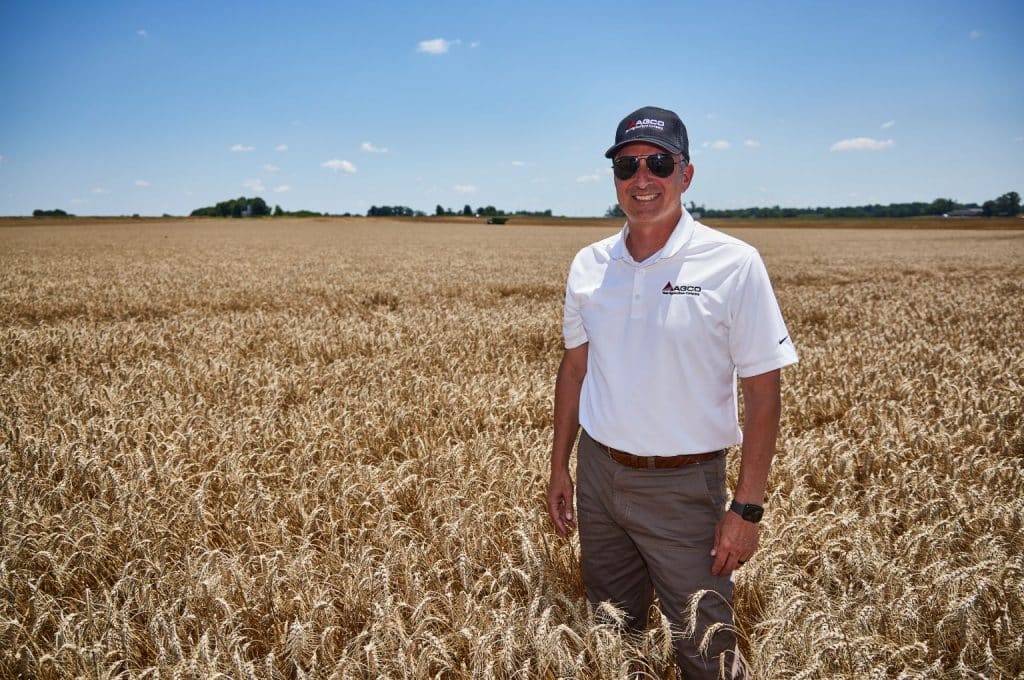


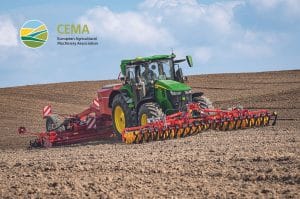
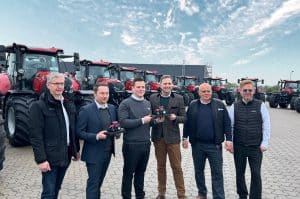
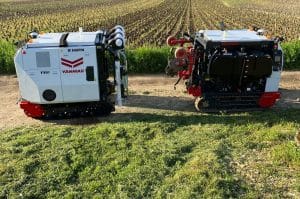
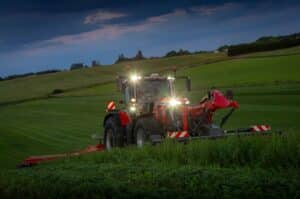
One Response
Excelente la visión y estrategia presentada por Presidente, CEO y Chairman de AGCO. Nuestra empresa GEOCOM con 24 años trabajando con Trimble en el area Geoespacial domina este mercado en Chile, con un fuerte negocio en la minería. Siempre hemos pensado que la participación de Trimble en el area agrícola en Chile tiene muchas posibilidades especialmente en area de la fruta, viñas y frutos secos. Nos encantaría poder participar en este mercado en nuestro país donde se necesita hacer una gran labor para integrar a nuestros agricultores a esta nueva tecnología.
Felicitaciones por la nueva empresa que junta a AGCO con Trimble para el éxito. !!!